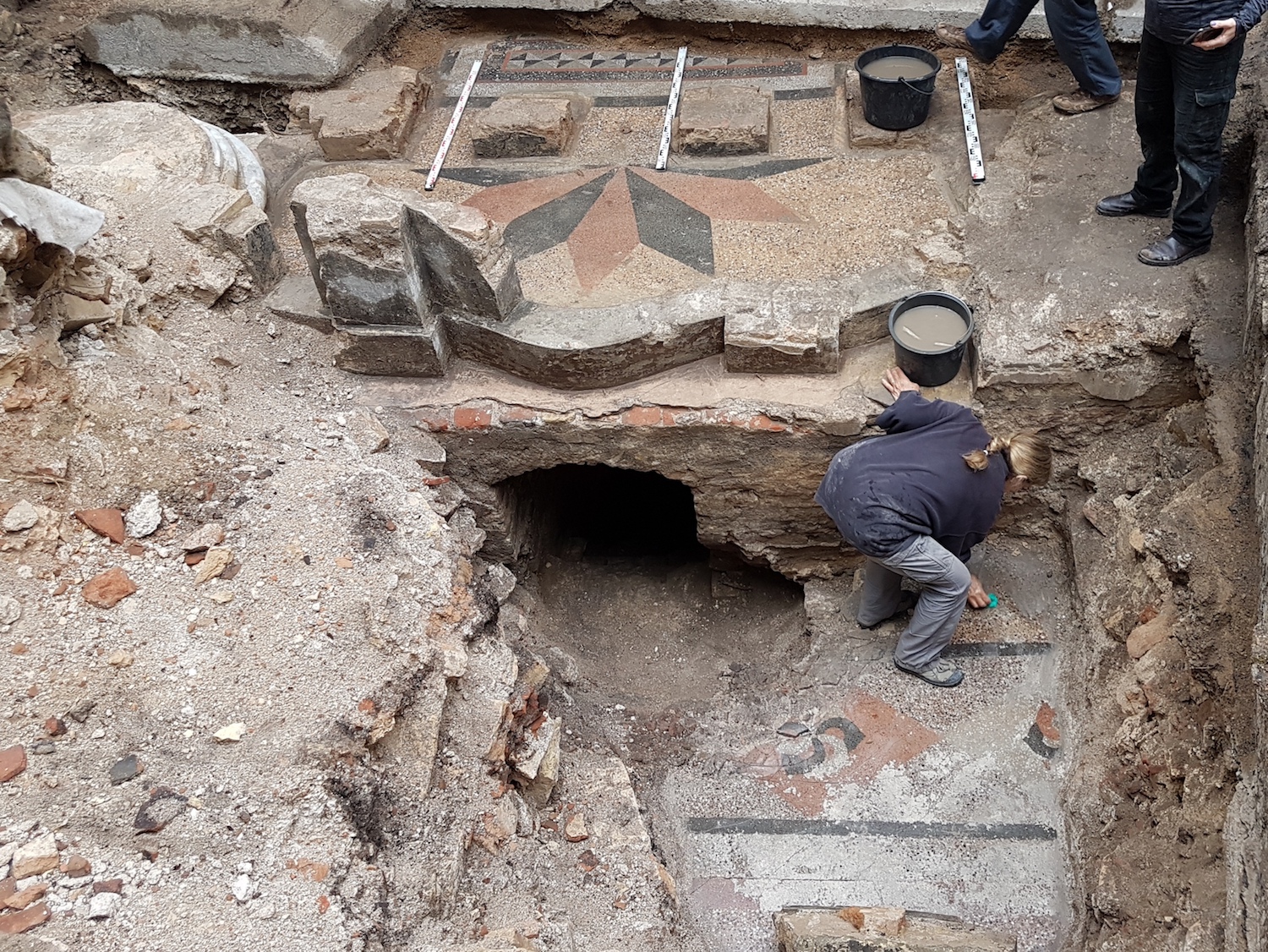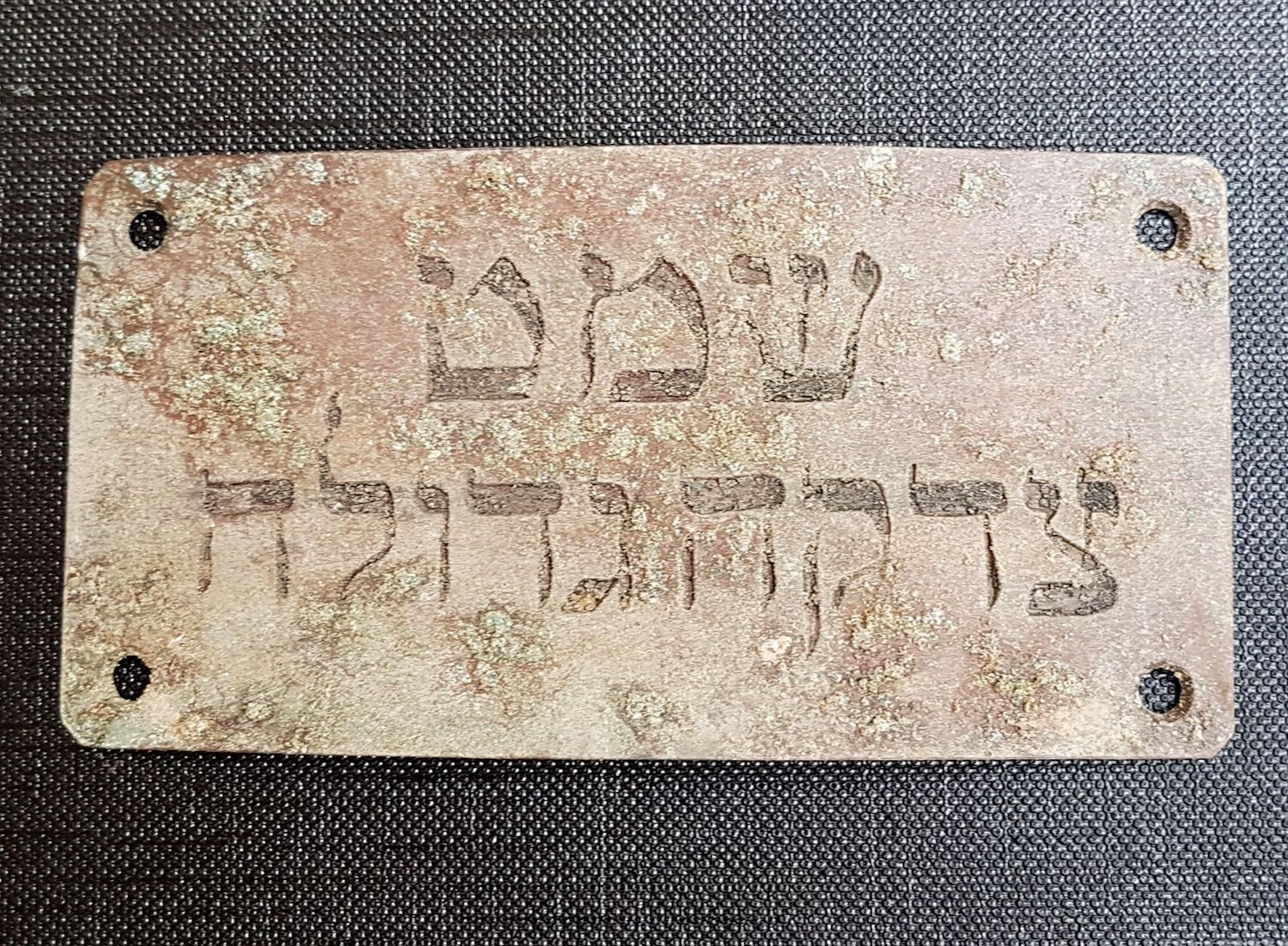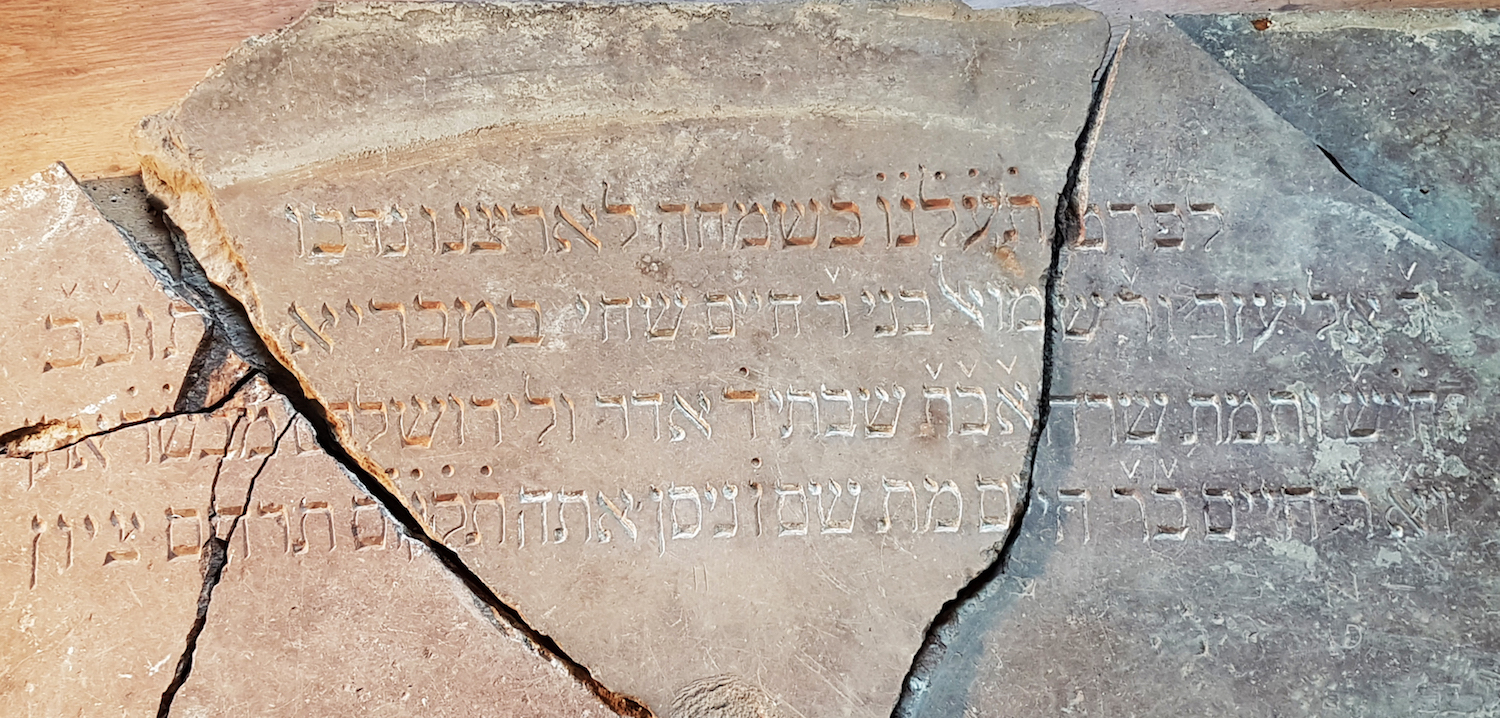Great Synagogue of Vilna, Ravaged by Foes, Yields Treasures and a Priceless Hebrew Inscription

Inside the buried remains of the Great Synagogue of Vilna in Lithuania, archaeologists have found a priceless inscription, colorful floors, piles of coins and parts of the bimah (bee-ma) — the structure where the Torah is read and Jewish services are led, according to the Israel Antiquities Authority (IAA).
The findings are remarkable because the synagogue, historically referred to as the "Jerusalem of the North," was badly burned during World War II and later razed by the Lithuanian Soviet authorities in 1957, said Jon Seligman, the director of the synagogue's excavation and an archaeologist with the IAA.
"The Great Synagogue is the most important synagogue of Lithuania," Seligman told Live Science. "It became no less than the cathedral of the Jews of the city." [Photos: Unusual Mosaics Decorated Ancient Synagogue in Israel]
Even after it was destroyed — and a kindergarten and a primary school were built over it — archaeologists knew where the synagogue's remains were located. But with the exception of a small excavation by Lithuanian archaeologists in 2011, the site wasn't thoroughly examined until 2015, when Seligman and his colleagues used ground-penetrating radar to pinpoint the historic building's ruins before digging them out.
As excavations began, the archaeologists, including Justinas Račas of the Cultural Heritage Conservation Force of Lithuania, began finding remarkable treasures. They located two ritual baths, known as mikvahs; part of the bimah; and floor tiles, Live Science reported last year.

This past season, the archaeologists found the bimah's front section, which was originally two-stories tall in the 18th century. They also found seating plaques, a floor with beautiful red-and-black geometric designs, and a cellar underneath the bimah, which held a prayer book from before the Holocaust. In addition, there were about 200 coins dating from the 16th to the 20th centuries, and buttons from Napoleon's army, likely from when French troops passed through Vilnius before being defeated in Moscow in 1812, Seligman said.
The most important finding, however, was a large inscription that two sons had made in honor of their parents in 1796, Seligman said. This inscription "was part of a stone Torah reading table that stood on the magnificent Bimah of the synagogue in Vilnius," Seligman and Račas said in a statement from the IAA.
Sign up for the Live Science daily newsletter now
Get the world’s most fascinating discoveries delivered straight to your inbox.
The two brothers — Rabbi Eliezer and Rabbi Shmuel — honored their mother, Sarah, and their father, Rabbi Chaim, who had emigrated from Lithuania to Eretz Israel and settled in Tiberias, according to the Hebrew inscription. This inscription illustrates the deep connection the Lithuanian Litvak community felt toward the Holy Land, Seligman said. [The Holy Land: 7 Amazing Archaeological Finds]

Bustling city
Vilnius became a major Jewish city starting in the 14th century, when the Lithuanian king gave Jewish people permission to settle there, Seligman previously told Live Science. At first, the synagogue was built out of wood, but in the 1600s, Italian and German architects rebuilt the city in brick, including the famed Great Synagogue.
After a fire in 1748, the synagogue was rebuilt by benefactors. But the city's authorities didn't want the synagogue to tower over its churches, so parts of the synagogue were built below street level, which is why so much of it is preserved today, Seligman previously told Live Science.
Tens of thousands of Jewish Lithuanians died in Lithuanian ghettos and concentration camps in Eastern Europe during World War II. To honor these people, as well as the Great Synagogue, the city plans to create a Jewish memorial center at the site by 2023, when Vilnius celebrates its 700th birthday, the AFP reported last year.
- Photos: Escape Tunnel at Holocaust Death Site
- Photos: Israel's Largest Neolithic Excavation
- Photos: Biblical-Era Cistern and Carvings Discovered in Israel
Originally published on Live Science.

Laura is the archaeology and Life's Little Mysteries editor at Live Science. She also reports on general science, including paleontology. Her work has appeared in The New York Times, Scholastic, Popular Science and Spectrum, a site on autism research. She has won multiple awards from the Society of Professional Journalists and the Washington Newspaper Publishers Association for her reporting at a weekly newspaper near Seattle. Laura holds a bachelor's degree in English literature and psychology from Washington University in St. Louis and a master's degree in science writing from NYU.









